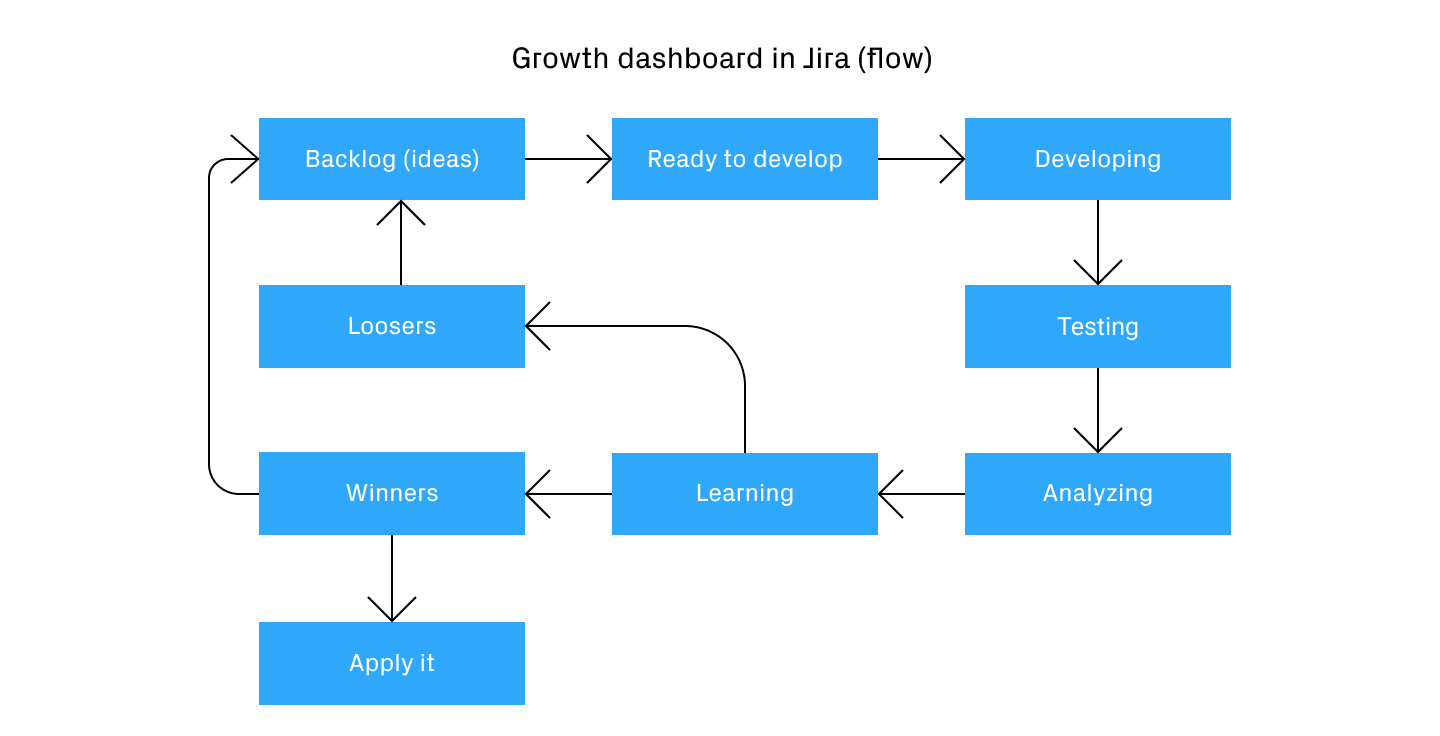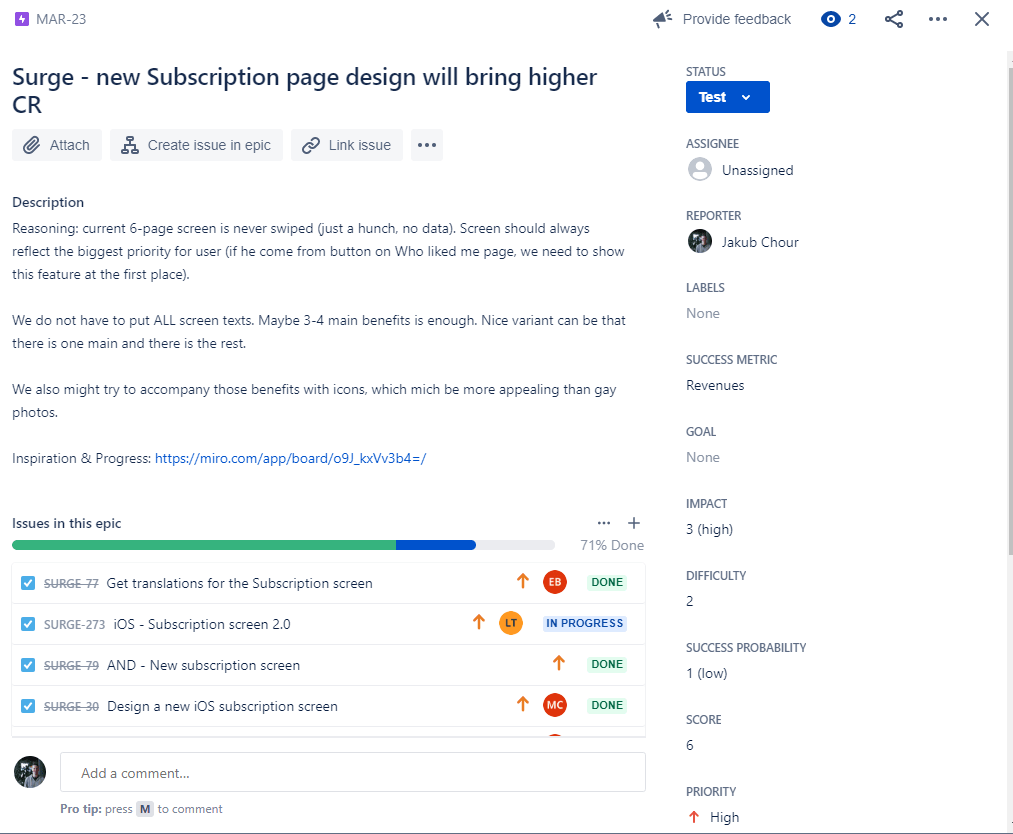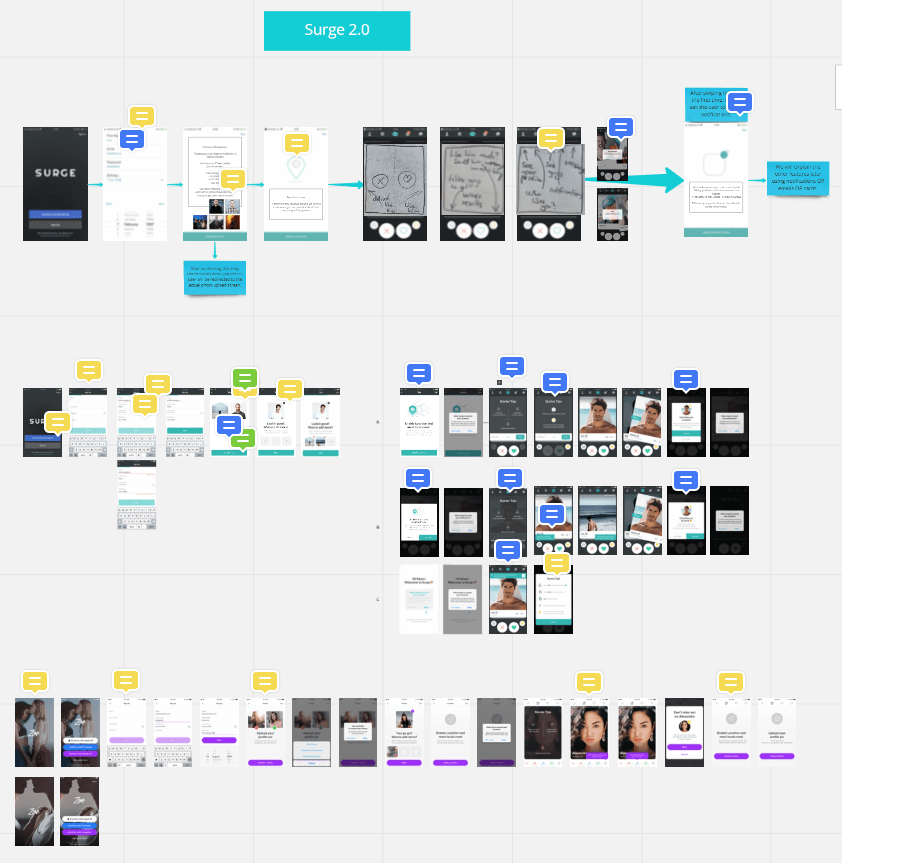We use Jira for growth management and we’re not ashamed. I’ll show you how we use it and why it’s probably better than, or at least as good as, your current growth tool.

What do you use to track your product and marketing growth experiments? If you’re serious, you probably track it somehow. In Sheets, an internal knowledge base, or simply leaving it as it is in each A/B testing platform. It’s cheap and if you do less than, say, 50 experiments per year, it’s probably fine.
However, this approach also has disadvantages. First and foremost, a huge mess, even if you only do a few experiments each week. Even something basic: here’s new creative for Facebook, there’s a new onboarding screen in the app (Firebase), an email to churning users has a new subject (Sendgrid) and you’ve also changed the product price in France (Visual website optimizer). That’s four different experiment platforms so far and we still haven’t finished. You might test more app platforms (so iOS and Android), you probably do ASO, push-messages, influencers… you know the stuff. So, by the end, you’re probably looking around for some solution.
Issues with current growth tools
The biggest issue with every tool I’ve seen is that it’s hard to extract results from most of the sources programmatically. Take Google Play as an example. Even though it’s generally a good platform for testing (ASO), it’s impossible to access experiment data by API or to download them manually. GP emails say “this is a message that you have a message”. I have to look into the tool to check whether the experiment was good or not.

Despite having more reliable sources of data from your experiments, you probably can’t really extract more than 70% of the data without copy-pasting from one tool to another.
And there are also costs connected with having such a tool. I see some tools charging $150 USD per month for a few-member team. If you manage huge growth budgets, it’s probably fine, but still, it bothers me.
What should every growth management tool have?
In my opinion, this is what any growth tool should do: improve your experiment tracking, look at past experiments, and learn from them.
It should also be close to the developers. Many of our experiments are done with the help of our developers. Set up a feature flag in Firebase, back-end tweak, database export etc. You’ll end up transferring texts from your growth management tool to whichever issue tracking tool if you split it. Chances are, you already have it. It’s good old Jira. Please hear me out, I’ll show you why.
Stick what you already have — Jira
Our set-up is pretty straightforward. We have a separate dashboard for growth (because the flow is different from software development). It has the usual growth flow:

How does our Jira Growth flow look like?

Our Jira growth dashboard
Each growth issue has its own growth score as a result of other custom columns named Impact, Difficulty and Success Probability. Each is also a member of some Epic like Screenshots or Monetization, and most of them have labels like app names, part of the funnel, platform, etc.

Typical growth issue we have
In our experiment traffic, it’s still possible to track and move tests between columns manually, but for most apps we use for testing, it’s hard to automate. You can, for example, set experiments to move to testing when a related issue on the developer dashboard is set as “DONE”, but in practice, it doesn’t work, as it also needs to be deployed to app stores, each of which acts independently in terms of when they release it, especially the App Store.
Some automation is still possible: each ready to build issue on the growth dashboard can be automatically cloned to the developer dashboard and older issues can be cleared and moved to the archive. This is done through Zapier. If you are fancy enough, you can also connect GitHub to track deployed issues, Typeform to gather feedback and new ideas (a new form creates a new growth issue) or Miro, where we track visualizations before they go into production.

Miro dashboard for each issue
All it requires is a bit of discipline, but don’t go crazy. As far as I know, every tool requires some effort, regardless of what they say. Remember how your old knowledge bases, FAQs and Wikis ended up? Don’t bring in some new, soon-to-be-forgotten tool, keep it simple and use what your team already uses.
Keep up good work
If you’ve read everything up to here, you probably know how to track your experiments. Simplify. Save your energy if you only do 1–2 experiments per week, especially if you’re doing it in one of the better A/B/X testing platforms. If you do more or even multiple experiments, it’s not a hard decision what to use. Go with Jira like we do or with whichever tool you use for sw development. Automation is possible, but in many cases, it’s just not worth the extra effort.
Bonus: Name your experiments for less mess
Do you do campaigns online? You probably track them, so you keep it tidy on Facebook or Google Ads, right? My recommendation: if you want to go back to your experiments in a few months, it’s best to name them. How? As simply and clearly as possible, so you can tell what was it about only from the experiment name.
Example Facebook campaign naming:
GEO | Brand | Product| Campaign goal (funnel part)
US | Pepsi | 7-up | Engagement
Experiment naming:
ISSUE NO. | (potential) Growth score | What | Platform | Funnel part (AARRR)| repetition
SURGE-167 | 18 | Notification pop-up | iOS | Activation | #2
Table of Contents












